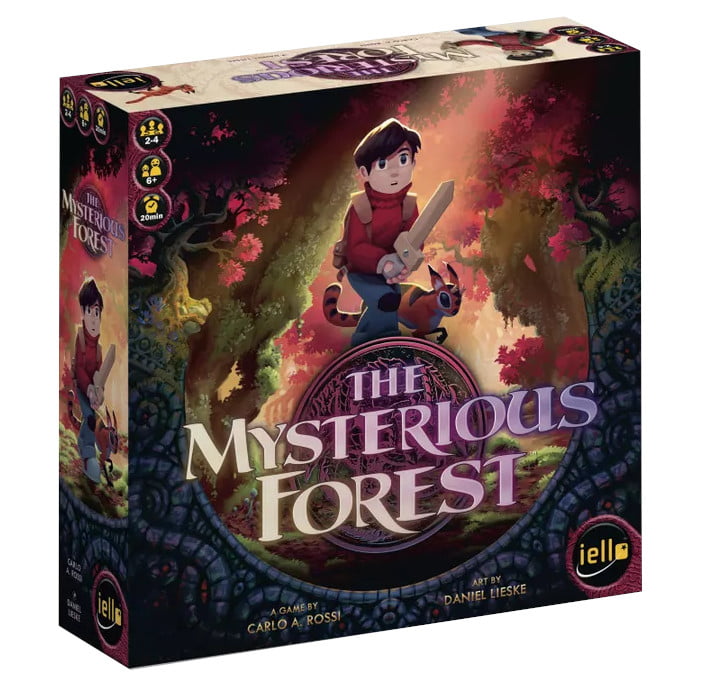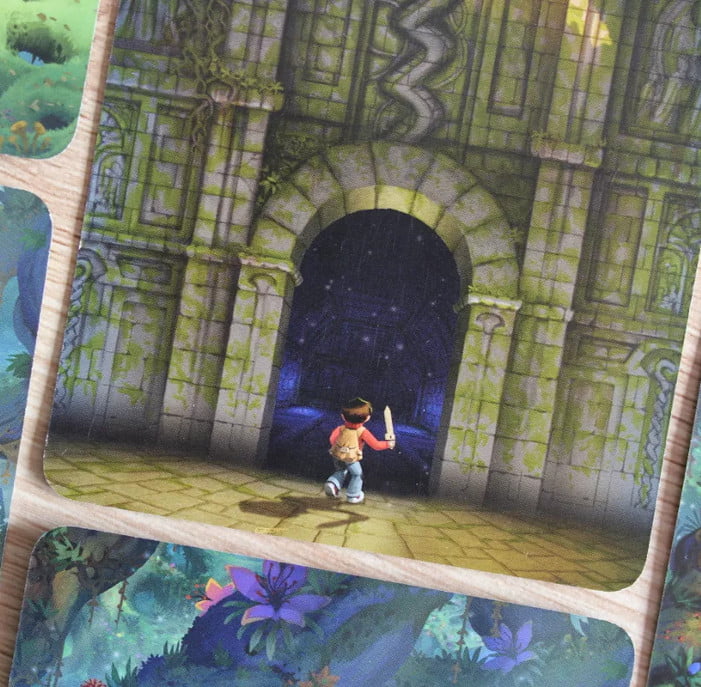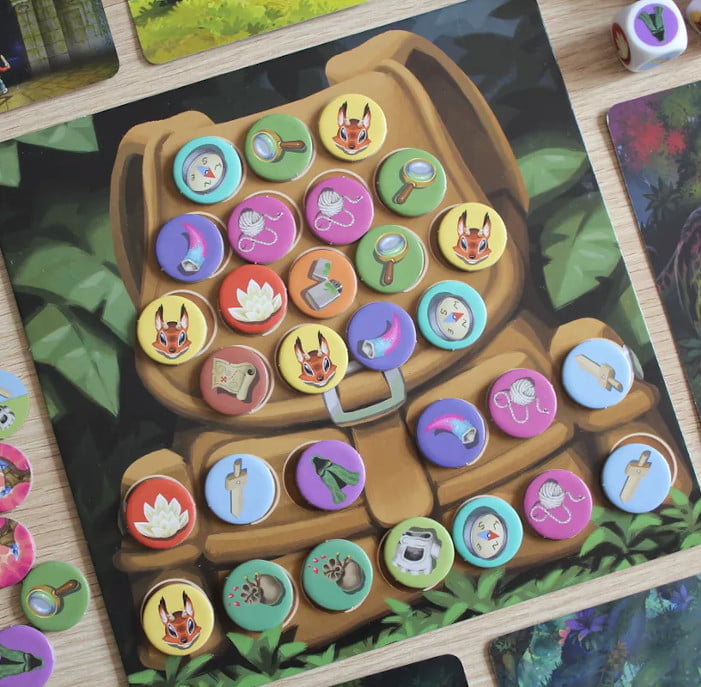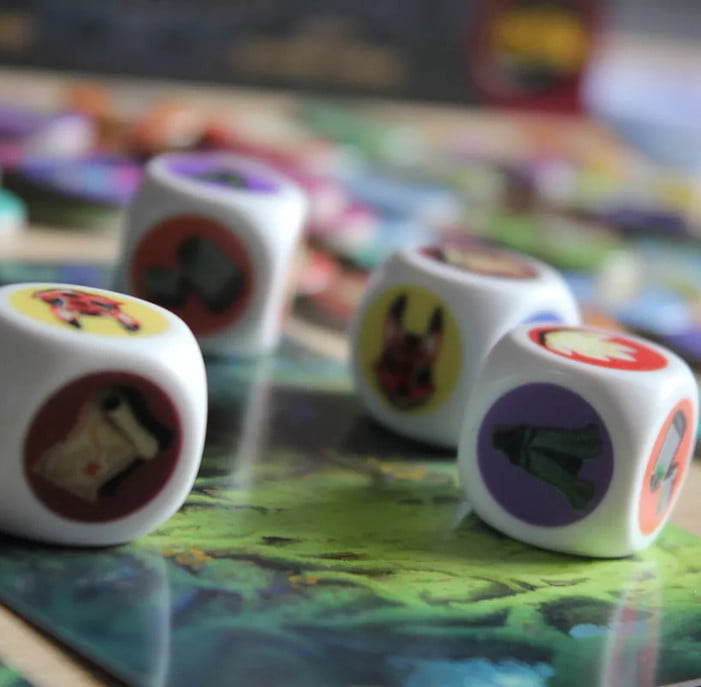How little game does your game need to be a game?
The Mysterious Forest as a board game is extremely simple. There are some cards, face down in front of you. You, and the whole table, flip the card over, and memorise the symbols on that card you need. You turn each card face down, then flip over the next one. You know, ahead of time, all the symbols you’re going to need.
Then you roll some dice that represent the symbols of what you need to complete each card’s goals, and put tokens representing them into a limited-supply backpack. When you’re loaded up, off you go, flipping a card over and spending your tokens to activate the card. That’s the entire mechanism of the game: You’re trying to plan ahead for the problems you’re going to encounter, and you know all of what those problems are. It’s a memory game, in the simplest way.
You may think that part of this game is made challenging by a communication problem — like maybe players aren’t meant to share what they know they’re looking for, but the game is very, very clear that you all look at the problems together. But they are looked at by one player at a time. This is a game that you’re meant to play as a group, not necessarily just a solo game (though it works fine that way).
This may sound like it’s mechanistically thin, and it definitely is! This is a game aimed at children, after all. Maybe it’s a byproduct of me being older and brainrotted by having digital devices making every single thing in my life easily monitored or double checked, but I found this game genuinely challenging, as if the number of cards and symbols you’re managing in the game — and the challenge of negotiating a shared, external memory — was somehow something I’m genuinely bad at.
The game is also quite lovely, visually; the artist is working on a digitally-presented visual novel called The Wormwald Saga, something we’d have called a ‘webcomic’ but that implies a bit more four-panel stuff rather than the long form comic-page structured design that Daniel Lieske’s beautiful, in-depth digital painting presents. It’s definitely visually lovely, but I found the font so squinty and the pages so dense with text I kinda checked out, but hey that doesn’t matter here.
The game is after all heavily abstracted! It’s pretty in a way that benefits from a printed medium, but the actual things you’re doing are left as an exercise to the player (like, really — the game suggests you tell a story about what you’re doing with the rope and the cloak). I get it, it’s a way to add a storytelling dash to this game. I didn’t do that, but we were focused on solving the puzzle.
Typically speaking, I find most ‘storytelling games’ lack any kind of teeth, but less ‘teeth like a predator’ and more ‘teeth like a gear.’ When such a game is put in the hands of a player who isn’t good at storytelling or inventing narratives, the whole thing can grind to a halt and leave that player embarrased or frustrated, which, y’know, when you’re talking about a game you play with kids, that can be a real problem.
I was honestly expecting this game to be challenge-less for me as an adult, but give the kid I bought it for a chance to play very freely. What I wasn’t expecting was for the game to be really quite good, to have a memory load just high enough that even I, an adult, struggled with it. I wasn’t expecting the rulebook to include variants for making the game harder, and to include clever tricks that exploit the game’s duration.
It’s a genuine surprise: this game has a small number of moving pieces, such that I could see a case for making it a small box game. It’s still priced very aggressively, and that simplicity in systems doesn’t stop it being a large amount of game in its box. I was surprised by it, but mostly I was surprised by how good a job it did at being an engaging game experience with so little game.



